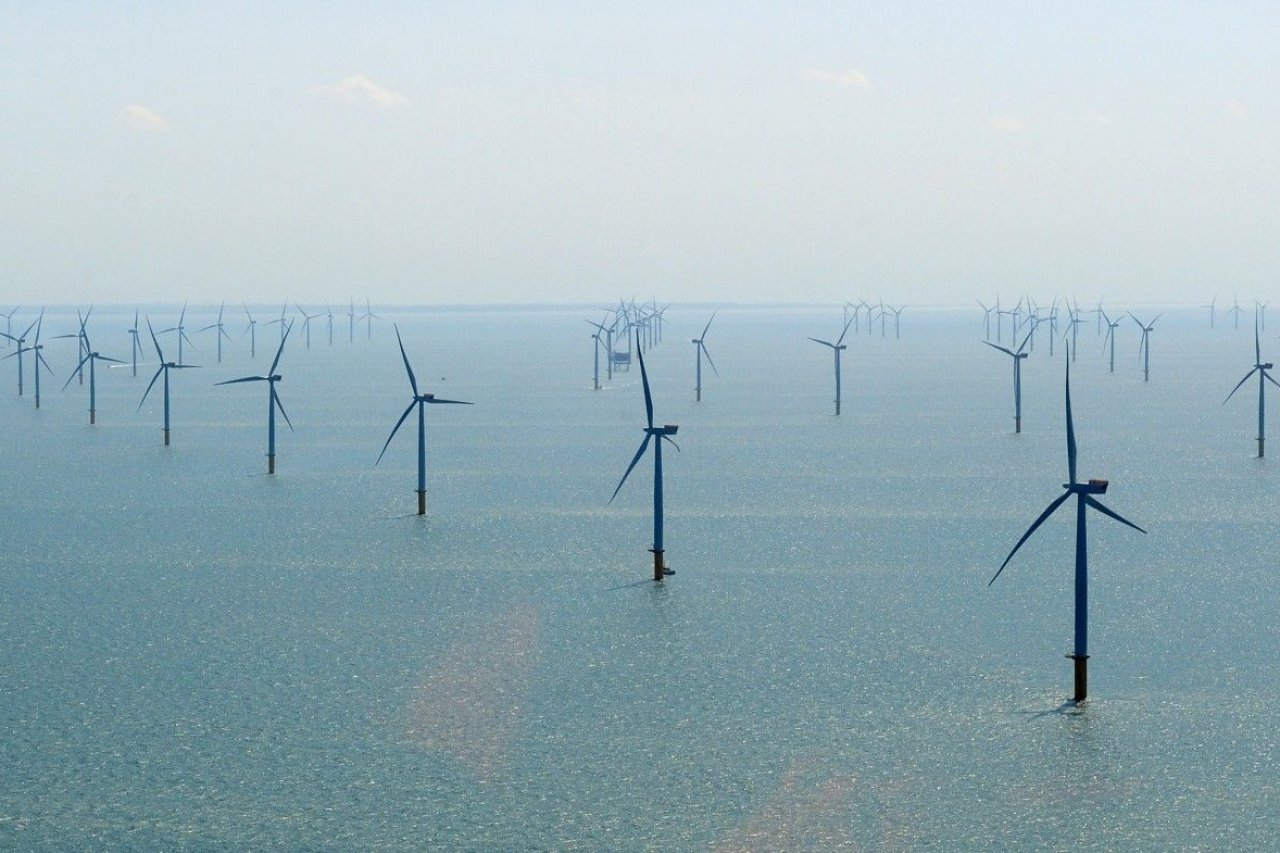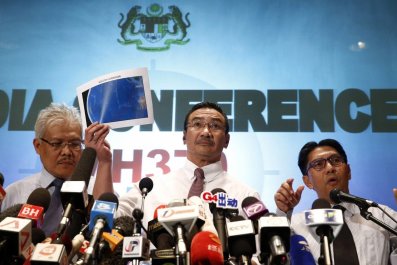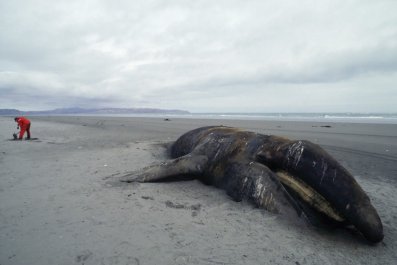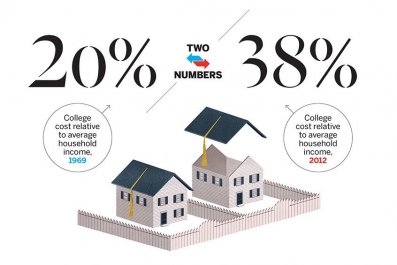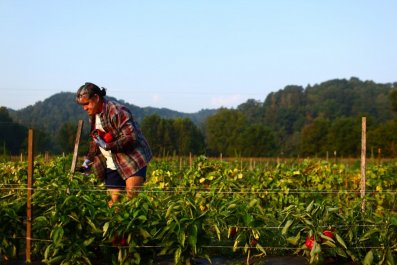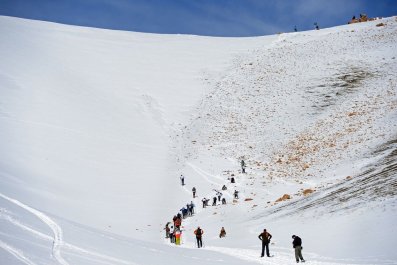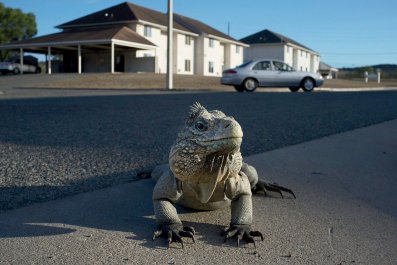For thousands of years, humans have tried to control the weather. In the ancient Near East, people would plead for relief from storm gods by leaving amulets at special temples. Later, in Mesoamerica, the Maya had a go at weather manipulation—they tried to trigger rain by throwing women down wells.
As these strategies fell out of favor, science picked up the slack, with a bit more luck. For example, "cloud seeding," largely spearheaded in the 1940s by Bernard Vonnegut (the older brother of novelist Kurt Vonnegut) entails adding chemicals such as silver iodide to clouds to encourage the development of rain droplets or snowflakes. In some cases, this method has resulted in precipitation increases of 10 percent.
That's a neat trick if you want to water your crops, but not much help if you hope to keep your house from being blown into a pile of matchsticks by a hurricane. Sure, scientists have kicked around ideas about controlling Mother Nature's most potent storms, but with little success. Over the years, there have been many stranger-than-fiction proposals, such as nuking the eye of the storm—which the National Oceanic and Atmospheric Administration (NOAA) says is suggested every hurricane season—and dropping a giant ice cube in the middle of the storm and filling the lower parts of a hurricane with smoke (the last was the epiphany of Daniel Rosenfeld and others at Jerusalem's Hebrew University).
A Stanford engineer's recent hurricane-taming pitch, however, seems more scientific than science fiction: wind farms. Mark Z. Jacobson, a civil and environmental engineering professor, has studied air pollution, climate and energy infrastructure with computer models for more than two decades. Some of his recent research involves developing a new energy plan for the U.S., involving mostly offshore wind farms. Shortly after Superstorm Sandy, he was giving a talk on this proposal in New York City when an audience member asked: "If you have a lot of offshore wind turbines, wouldn't the hurricane destroy the turbines?"
"I thought, Maybe not," Jacobson tells Newsweek. "I thought, We have an opportunity to find that out, because I have a model to actually check this.' "
While he wasn't able to put up turbines all along the Eastern Seaboard or Gulf Coast, Jacobson (along with Cristina Archer and Willett Kempton of the University of Delaware) could use data from several storms, including Sandy and Katrina, as well as mechanical data from other wind turbines, to predict what might happen if those shorelines had been buffered by wind farms.
They found that the farms could potentially reduce wind speeds by approximately 50 percent at landfall. How? When winds spin through turbine blades, some of their kinetic energy gets converted to electric energy. In theory, the extraction of kinetic energy from winds during this conversion process could actually slow them.
If true, that could make a pretty significant dent: Katrina, a strong Category 4 storm on the Saffir-Simpson Hurricane Wind Scale, had 140 mile-per-hour winds at landfall. Most Eastern hurricanes are weaker, averaging somewhere between 74 and 110 miles per hour. Reducing them by half, Jacobson says, would mean those hurricanes would have only the force of tropical depressions or storms.
Jacobson's study also predicts that wind farms could shrink storm surge—when a hurricane causes waters along the coast to rise far above the normal tide, typically resulting in extensive flooding—by up to 79 percent, due to lower wind speeds. It's hard to calculate average storm surge—the Saffir-Simpson Hurricane Wind Scale stopped including surge in categorizations in 2010. But because storm surge is "often the greatest threat to life and property from a hurricane," NOAA says, less surge could mean less catastrophic damage.
Based on his calculations, a 100,000-turbine wind farm spanning from New York to Washington, D.C., could have sapped Sandy's winds by up to 87 miles-per-hour and reduced storm surge by 34 percent. With Katrina, he claims that the same number of turbines could have cut wind speeds by up to 98 miles per hour and storm surge by 79 percent.
Then there's the added benefit of these hurricane-weakening wind farms producing serious amounts of clean energy. Some of Jacobson's energy infrastructure stats indicate that 14,000 offshore wind farms could supply 45 percent of New York state's energy demands by 2050. (While there are currently no offshore wind farms anywhere in the U.S., the European Wind Energy Association says there are 2,080 offshore turbines operating and connected to the energy grid in Europe.)
The response in the weather expert community has been mixed, ranging from strong skepticism to tempered excitement. It's an enticing theory, says Mark D. Powell, a hurricane researcher at NOAA. Jacobson is among the first scientists to consider tackling hurricanes with wind farms and NOAA is so intrigued, Powell says, that the agency will fly its data-gathering "Hurricane Hunter" planes, which are piloted into storms every season for meteorological research, into areas with proposed turbines. By gathering hurricane wind data from those areas, scientists might be able to predict how turbine blades would be impacted by hurricanes.
Kerry Emanuel, a climate scientist at Massachusetts Institute of Technology, lauds the simplicity of Jacobson's approach. "It's a fairly straightforward calculation," he says. "It's not at all implausible."
That's not to say it's a slam dunk. Emanuel has concerns about whether Jacobson's hypothesis can be vetted at all, pointing out that "it's difficult to test in nature." As an example he cites Project Stormfury, a failed government-sponsored hurricane control program that ran from the 1960s to the 1980s. Project Stormfury posited that seeding hurricane clouds—via airplane—would cause those clouds to freeze, weakening the winds. Even though Stormfury was an obvious flop—the cloud-freezing method of killing 'canes just did not work—it was almost impossible to scientifically assess the project, Emanuel says. "They're not controlled experiments," he explains. "If the hurricane weakens, how do you know it wouldn't have weakened anyway? If it strengthens, how do you know it wouldn't have strengthened even more?"
There's also the cost issue. While Jacobson maintains that the turbines would pay for themselves—generating electricity while preventing billions in hurricane damage—the price of far less ambitious wind farms than the 100,000-turbine setup in Jacobson's model raises questions about feasibility. For example, a proposed wind farm off the coast of Rhode Island—composed of only five turbines—is expected to cost $300 million, according to the Providence Journal.
And then there are the skeptics. When first asked about Jacobson's wind-farm hypothesis, Nicholas Coch, an expert in northern hurricanes at Queens College in New York, exclaimed, "Holy cow!"
Coch then emphatically rejected the premise. "That wind farm couldn't possibly drain that much energy out of the wind," he says. Despite his incredulity, Coch is not at all surprised by the proposal. Several years ago, he and several other scientists, including Emanuel, participated on a PBS program on hurricanes that included a call-in segment. One of the callers also wanted to deter these great storms with wind farms. That gentleman "wanted to build windmills along the Florida coast to blow hurricanes back to Africa," Coch recalls with a laugh.
As unlikely as the wind farm idea is, there's a good reason scientists are thinking about it: None of the methods to reduce the impact of hurricanes has made much difference, from levees to storm barriers, seawalls and dunes.
Still, for now at least NOAA is not investigating the possibility of weakening or preventing hurricanes at all. Instead, it's "focused on improving hurricane forecasts," Powell tells Newsweek. By knowing what to expect, cities can better prepare for the inevitable—and the best option might still be to evacuate before it is too late.
Of course, Coch says that there is one surefire solution to hurricanes: Don't build where there's flooding. "The only answer is avoidance and mitigation—abandonment of areas below 20 feet in elevation," he says. "That's not a popular thing."
It's also impossible to backtrack on centuries of development and settlement in areas like New Orleans and New York that sometimes are in hurricanes' paths. For those deeply entrenched communities, leaving is simply not an option, and new theories like Jacobson's wind farms offer hope where little was previously to be found.



